Liverpool Scene Before The Beatles
The Liverpool scene before the Beatles – that’s before the Fab Four version of the band, after Pete Best left and Ringo completed the iconic lineup, in the summer of 1962.
PODCAST OF
Liverpool Scene Before the Beatles
INTRODUCTION
Liverpool in the 1950s and early ‘60s had one of the most exciting music scenes in the country. Clubs popped up all over the city, mostly jazz clubs with a grudging acceptance of skiffle. Traditional, or trad jazz, was a very British take on New Orleans jazz.
Skiffle groups emerged in the mid-1950s, often picking up songs from the American folk-blues tradition. Lonnie Donegan’s first hit in 1956 was a great example of this, Rock Island Line c/w John Henry, both Lead Belly covers.
Skiffle groups tended to use guitar, one-string tea-chest bass and washboard. The washboard was a corrugated iron device designed for washing clothes. Skifflers re-invented it as a percussion device, played in a strumming manner with sowing thimbles on the fingers.
As time rolled on, the jazz clubs progressively accepted beat music because skiffle and rock’n’roll were becoming more and more popular. Towards the end of the 1950s the skiffle groups morphed into beat groups. Beat groups had a lineup of, two guitars, drums, the recently-introduced electric bass guitar and a singer or two. The singer would sometimes be one of the musicians or, very often, a vocalist pure and simple.
Some of the Liverpool groups who started out as skiffle bands went on to international fame. Others were very successful locally but never quite managed the transition to even national fame. The vast majority of semi-pro groups had lots of fun but achieved very little acclaim.
Most of the music at this time was a take on American jazz, blues, R&B and rock’n’roll. Cover versions abounded.
LIVERPOOL HAD ITS VERY OWN RECORDING STUDIO
In 1955 Percy Phillips started Phillips Sound Recording Services, at his home at 38 Kensington, Liverpool. He’d started out in 1925 selling motorbikes and bicycles from a small shop in Brunswick Road, Liverpool 7. This introduced him to batteries and he sold and recharged batteries. To compliment this, he also sold radios. By the 1950s he was selling more electrical products than batteries. He noticed that records and record players were selling well and decided to terminate his battery business to focus on records and record players. His love of music led him to set up his own recording studio in early 1956, at his home in Kensington. Shortly afterwards he recorded one of the first skiffle records with Tony Allen, singer with the Blue Mountain Boys.
CLUBS OPENED
Alan Sytner opened the Cavern Club, as a jazz club, at 10 Matthew Street on 16 Jan 1957. The opening night featured, The Merseysippi Jazz Band, The Wall City Jazz Men, Ralph Watmough’s Jazz Band and The Coney Island Skiffle Group. The proportion of jazz to skiffle gives a good indication of the way it was in the mid-1950s.
In the late summer of 1957 the Mardi Gras club opened at Mount Pleasant, Bold Street. Jim Ireland was a co-owner of the club with Stan Roberts, who had recently benefited from a respectable win on the football pools. Jim Ireland was one of the major players in the Liverpool scene. As well as owning a number of clubs, he also managed some of the high-profile bands, including the Swinging Blue Jeans and the Escorts. The Merseysippi Jazz Band, who formed in the late 1940s, were regular performers at the club.
Alan Williams was another mover and shaker on the Liverpool music scene. In September 1958 he opened the Jacaranda Club on Slater Street. The club was affectionately known as “The Jac”. It was not licenced, as was very often the case at that time. Allan Williams was the guy who organised the Beatles’ first trip to Hamburg
In the late 1950s the Sink Club opened in the basement of the Rumblin Tum coffee bar on Hardman Street. Very imaginatively, it used a sink plug and chain as proof of membership. Around the same time, Brian Casser opened the Cassanova Club in Temple Street.
SKIFFLE GROUPS
Brian Casser was also a musician and during his stint of National Service in Germany, hooked up with Bill Wyman to form a skiffle group. Bill Wyman later found fame as bassist with the Rolling Stones.
GERRY MARSDEN
Gerry Marsden’s father bought him an acoustic guitar around 1956/’57 and he formed the Gerry Marsden Skiffle Group. The group included his brother, Fred, on the drums and various chums on washboard, tea-chest bass and second guitar. Brian O’Hara joined them slightly later. He went on to form the Two Jays, which found lasting after the duo finally morphed into the Fourmost.
Around 1958 Marsden’s skiffle group morphed into Gerry and the Mars Bars. Gerry’s father managed them and tried to get permission to use the Mars Bar name. When this was not forthcoming, the group renamed to Gerry and the Pacemakers. They achieved international success during the British Invasion, when British bands dominated the American music scene. The classic lineup was: Gerry Marsden guitar and lead vocals, Fred Marsden drums, Les Chadwick bass and Les McGuire piano.
HOWIE CASEY
Saxophonist Howie Casey was in some of the most popular bands of the era and in 1959 formed Derry and the Seniors, which included guitarist Brian Griffiths and singer Derry Wilkie.
BILLY FURY
Billy Fury made his first recording at Percy Phillips’ studio on 18 April 1958. The date is taken from Percy Phillips’s studio Log book, where the entry for the session records it as “Youth with guitar. One ten-inch double sided disc”.
Billy Fury’s big break came on 1 October 1958, when he performed onstage at Larry Parnes’ Extravaganza show at the Essoldo Theatre in Birkenhead. Marty Wilde headlined the show, with support acts including Vince Eager and the John Barry Seven.
It all came about after Ronald Wycherley sent a demo recording to Larry Parnes. This resulted in an invitation to meet at the Essoldo. They met up backstage during the interval. Ronald Wycherley hoped to interest Marty Wilde in recording one of his songs. Larry Parnes was so impressed that he invited him to open the second half of the show. At this impromptu appearance the soon-to-be Billy Fury performed
Margo, Don’t Knock Upon My Door and Maybe Tomorrow.
Larry Parnes signed him up and changed his name to “Billy Fury”. He appeared in the Extravaganza show the following night and a recording contract with Decca followed shortly afterwards.
His first, self-penned single, Maybe Tomorrow, gave him his first UK hit single, peaking at #18. This began a run of hit singles which lasted until 1966.
QUARRY MEN – EVENTUALLY BECAME THE BEATLES
In July 1958 the Quarry Men made their first recording in the studio at Percy Phillips’ home. They recorded That’ll Be the Day, originally by Buddy Holly, and a Paul and George composition, In Spite of All the Danger. The lineup for that historic session comprised: George, Paul and John on guitar and vocals; with Colin Hanton drums and John Lowe piano.
The date and cost of the session are in question. On a blue plaque outside the studio, the date is given as the 14 July, with a cost of 17/6. The studio’s own website suggests that the date was 12 July and the cost was 11/3.
ROOTS OF THE UNDERTAKERS
In 1959, Bob Evans and the Five Shillings became “The Vegas Five”. The lineup included singer Geoff Nugent. They eventually became “The Undertakers”.
BRIAN CASSER
Brian Casser had previously opened the Cassanova Club and formed a skiffle group with future Rolling Stone Bill Wyman. Around 1959 he formed Cass and the Cassanovas, as the band evolved the lineup became: Brian Casser vocals and guitar, Adrian Barber guitar, Johnny Hutchinson drums and Johnny Gustafson bass. When Brian Casser left to try his luck in London, the others stayed together and changed their name to “The Big Three”.
The Undertakers and the Big Three were two of the best live bands on the Liverpool scene. Both had minor hits but sadly, neither found wider success. I saw both of them a number of times – amazing.
TURN OF THE DECADE – MORE CLUBS AND GROUPS FORMED AND MATURED
CASBAH COFFEE CLUB
On 29 August Mona Best opened the Casbah Coffee Club in the cellar of her home at 8 Hayman’s Green, West Derby Village. The house had previously been used as the headquarters for the local Conservative Party. Mona Best was inspired by the 2i’s coffee bar in London, the spiritual home of skiffle. The movie Tangiers provided further inspiration for the club’s name. It was a members-only coffee club and reputedly, had the largest selling Coca-Cola account in Liverpool. John, Paul and George helped decorate the club with paintings. Mona Best was the mother of Pete Best, who became the first Beatles drummer.
The Quarry Men played on the opening night, a last-minute replacement for George’s group, The Les Stuart Quartet. This came about when George and Ken Brown fell out with the other members of the Les Stuart Quartet. It’s interesting to ponder on what might have happened if George had not fallen out with the band. He might have stayed with them and not continued with the Quarry Men… maybe not become a Beatle…
CAVERN CLUB
In October 1959 Ray McFall took over from Alan Sytner and became the new owner of the Cavern. Alan Sytner was a jazz enthusiast, who disliked rock’n’roll. On Ray McFall’s watch the club became more amenable to beat music.
When John Lennon made his Cavern debut with the Quarry Men on 7 August 1957, they ventured into the realms of rock’n’roll with a couple of Elvis songs. Alan Sytner, owner at the time, took a dim view of this and sent Lennon a note onstage, to “Cut out the bloody rock’n’roll”.
DOWNBEAT CLUB
The Downbeat club opened, as a jazz club, on Victoria Street in 1960. Another of Jim Ireland’s clubs, it was decoration by local artist Bob Percival. In late 1961 / early ’62 it became a beat club. By then beat groups were dominating the scene. The club later developed into a soul music venue.
WYVERN SOCIAL CLUB
Another club opened its doors in 1960, when Allan Williams took over the Wyvern Social Club, aka The Raz, in Seel Street.
THE SANDSTORERS
The Sandstorers formed in 1960, with founding member Billy Ashton. They became Billy Forde and the Phantoms and eventually Billy Kramer and the Coasters. Brian Epstein approached them to become their manager but the Coasters didn’t want to turn professional. Keen to sign Billy Kramer, Epstein found him a backing band from Manchester, The Dakotas. He attracted them with the offer of a recording contract in their own right. It was John Lennon who suggested the “J” in his name and they became Billy J Kramer and the Dakotas.
THE SEARCHERS
The turn of the decade also saw the Searchers form, as the backing group for Johnny Sandon.
THE UNDERTAKERS
In early 1960 the Vegas Five became the Undertakers. The name came about accidentally, when the local newspaper, Liverpool Echo, made a mistake with the billing. The band obviously liked the new moniker and they stayed as The Undertakers.
In 1963 the Undertakers chose Do the Mashed Potatoes as the B-side for their single Everybody Loves a Lover. The song was a cover of the 1959 single from Nat Kendrick and the Swans. James Brown plays piano and calls out the song title. Nat Kendrick was James Brown’s drummer. The writing credited goes to Dessie Rozier, a pseudonym for James Brown.
SAM LEACH – INFLUENTIAL PROMOTER
Sam Leach promoted his first concert on 1 April 1960 and claims to have made £1,000 that night.
IRON DOOR
Another famous Liverpool club, Iron Door, opened its doors on 9 April 1960 in Temple Street. This was one of the larger clubs, with a capacity for over 1,600 people. The building had previously been used for butter packing. Opened by Geoff Hogarth and Harry Ormesher, it had a much more flexible attitude to musical genres than the Cavern. At the Iron Door you would find jazz and beat musicians jamming together. A plaque on the building proclaims that the Iron Door was the “Cradle of Mersey Beat”.
The Searchers had a strong association with the Iron Door. In 1961/’62 It became known as the Liverpool Jazz Society and Storyville Jazz Club. It was later also called the Pyramid Club.
AUDITION FOR BILLY FURY
On 10 May 1960, Larry Parnes was auditioning for a backing band for Billy Fury’s upcoming UK tour. Allan Williams arranged an audition at his Wyvern Social Club.
Cass and the Cassanovas tried out but failed the audition. However, Larry Parnes booked them to back another one of his acts, Duffy Power.
By this time the Quarry Men had become the Silver Beatles, John, Paul, George, bassist Stu Sutcliff and drummer Tommy Moore. Tommy Moore was late for the gig so Johnny Hutchinson of Cass and the Cassanovas stood in. They too were unsuccessful but did get booked to back another one of Parnes’ acts, Johnny Gentle, on his upcoming Scottish tour. Tommy Moore quit the group at end of that tour.
1st BEAT NIGHT AT THE CAVERN
The first “Beat Night” at the Cavern came on 25 May 1960. Rory Storm and the Hurricanes, with Ringo Starr and Johnny Guitar, performed the opening set. With an entry fee of 2/6, the evening also featured Cass and the Cassanovas.
The Beatles debut, with Pete Best, was still over six months away, on 9 February 1961.
SILVER BEATLES FIRST GIG AT THE JACARANDA CLUB
The Silver Beatles played their first gig at the Jacaranda Club on 30 May 1960. This was another of Allan Williams’s clubs. He asked them to play on Monday nights, when the house band, The Royal Caribbean Steal Band, were off.
Williams made the Beatles work at the club before he would let them play. John Lennon and Stuart Sutcliffe painted murals on the walls. Between May and August the Silver Beatles made about a dozen appearances at the club.
BILLY FURY BACKED BY FOUR JAYS
Billy Fury released the self-penned That’s Love on 19 May 1960. The record label credits, “with The Four Jays”. They eventually became the Four Most.
BEAT POETRY MEETS BEAT MUSIC
ROYSTON ELLIS
Royston Ellis performed at the Jacaranda Club in June 1960. He was a beat poet who liked rock’n’roll bands to back him in a fusion of beat poetry and rock’n’roll. At this Jacaranda gig he was backed by John Lennon and Stuart Sutcliffe in a band called the Dissenters.
John and Stuart were in the Silver Beatles at the time. On his website, Ellis suggests that the spelling of the Beatles name, from “ee” to “ea”, was inspired by this gig.
Other rock’n’roll luminaries to back Ellis in a fusion of poetry and rock’n’roll included, Jimmy Page at London’s Mermaid Theatre in July 1961, and the original Shadows, Hank Marvin, Tony Meehan and Jet Harris also in 1961.
HOWIE CASEY
In early 1960 Derry and the Seniors became Howie Casey and the Seniors, with a lineup including Derry Wilkie, Howie Casey, Brian Griffiths and Phil Whitehead.
Allan Williams took them to the 2’is in London, where they met Bruno Koschmeider, a club owner in Hamburg. This led to the lads being one of the earliest (if not the first) Liverpool group to go to Hamburg.
BEATLES 1st HAMBURG TRIP
Allan Williams secured the Beatles a residency in Hamburg, starting in August 1960. The Beatles needed a drummer for the gig, Williams told them – no drummer, no gig. They had seen Pete Best play at the Casbah Club with his resident band the Blackjacks. The Blackjacks were disbanding and, after an audition, Pete Best became the Beatles’ first drummer.
Before going to Hamburg, they dropped the “Silver” from their name and finally became “The Beatles”.
This first Hamburg trip opened on 17 August at the Indra Club in Hamburg’s red-light district, with a lineup of: John, George and Paul on guitar; bassist Stu Sutcliffe and drummer Pete Best. It ended rather ignominiously in late-November, with three of the group deported. George was the first to leave, after it was discovered he was working underage. He was soon followed by Paul and Pete – for alleged arson. Stuart Sutcliffe stayed on in Hamburg with his new girlfriend, Astrid Kirchherr.
ALLAN WILLIAMS
On 1 Dec 1960, Allan Williams opened the first beat club in Liverpool, the Top Ten club. It burnt down just a week later.
PAUL McCARTNEY SWITCHED TO BASS GUITAR
With Stuart Sutcliffe staying on in Hamburg the Beatles needed a bass player, now that they were back in Liverpool. On 17 December 1960, they played their first gig with Chas Newby. This was the first gig in the UK as “The Beatles” and the first of four gigs with Chas Newby. The first outing for Chas Newby was at the Casbah Coffee Club run by Pete Best’s mother, Mona. Chas Newby had been a member of Pete Best’s old group, The Blackjacks, and was on vacation from his college course. He played his swan song with the Beatles on 31 December, once again at the Casbah.
With Newby back at college, the Beatles needed a bass player. Paul played bass for the first time at Litherland Town Hall on 5 January 1961. They returned to Hamburg at the end of March. Paul remained on bass and this effectively marked the end of Sutcliffe’s time in the group.
TIMES WERE A-CHANGING
BRIAN CASSER PARTED COMPANY WITH THE CASSANOVAS
At the end of 1960, shortly after the Mardi Gras Arts Ball at St. George’s Hall, Cass and the Cassanovas parted company. Brian Casser went to London, where he became the manager of the Blue Gardenia club in Soho. The others formed the Big Three: guitarist Adrian Barber, bassist Johnny Gustafson and drummer Johnny Hutchinson.
On 9 December 1961, the Beatles dropped in to see him at the Blue Gardenia and played an impromptu set. This followed their disastrous debut gig in the south of England.
During his time in London, Brian Casser formed Casey Jones and the Engineers. In late 1963, for just 7 gigs, the band’s lead guitarist was Eric Clapton, just before he joined the Yardbirds.
HOWIE CASEY AND THE SENIORS
In 1961 Derry and the Seniors became Howie Casey and the Seniors, after Freddie Starr joined as the second vocalist. They were the first Liverpool group to record, having secured a record deal with Fontana. They reputedly recorded a whole album, live, in an afternoon. Fontana put them with a London management agency but sadly, that didn’t work out.
ALLAN WILLIAMS
Allan Williams reopened the Wyvern Social Club as the Blue Angel on 22 March 1961. This rebranding was originally intended to create a sophisticated nightclub. It was named after a club in London and had a huge blow-up of Marlene Dietrich on the stairway, from the movie Blue Angel. The venture didn’t quite work out, it was unsuccessful as a cabaret club and reverted to beat groups.
MERSEY BEAT MAGAZINE
Founded by Bill Harry, the first issue of Mersey Beat magazine hit the streets of Liverpool on 6 July 1961. The name “Mersey Beat” was intended to describe a policeman’s beat. Harry wanted to inform local music fans of everything that was going on around them.
Bill Harry was at Liverpool College of Art and friends with John Lennon and Stuart Sutcliffe. Consequently, the Beatles were heavily promoted by Mersey Beat.
SAM LEACH NEARLY MANAGED THE BEATLES
Sam Leach met the Beatles in January 1961. This was around the time that he re-opened the Casanova Club, after taking it over from Brian Casser.
Sam Leach was one of the biggest promoters in Liverpool and on 11 March he organised the famous all-nighter at the Iron Door. It was promoted as “12 groups – 12-hours – Rock-Around the Clock – 8pm to 8am”. Bands performing that night included: The Beatles, Gerry and the Pacemakers, The Big Three, Kingsize Taylor and the Dominoes, The Searchers, The Remo Four and Rory Storm and the Hurricanes. It was billed as “At the Liverpool Jazz Society 13 Temple Street – The old Iron Door”.
Brian Epstein ran the NEMS record shop in Liverpool. On 9 November 1961 he visited the Cavern to see the Beatles and find out what all the fuss was about.
Sam Leach promoted the first of his Operation Big Beat concerts, at the Tower Ballroom, New Brighton on 10 November 1961. The Beatles topped the bill and curiously, the poster promoting the event says, “By kind permission of Mrs Best”, underneath the Beatles’ name.
Brian Epstein met with the Beatles to discuss becoming their manager on 3 December. No agreement was reached but he did persuade them to smarten up their leather-clad image.
The Beatles played at another of Sam Leach’s gigs at the Tower Ballroom New Brighton on 8 December. These Tower Ballroom gigs were attracting upwards of 4,000 people. That night the Beatles backed American singer Davy Jones. Not to be confused with the Davy Jones who was soon to become a Monkee.
The die for who would manage the Beatles was probably cast on 9 December, after the Beatles’ disastrous debut gig in the South of England.
Promoted by Sam Leach, it was held at the Palais Ballroom in Aldershot. The posters advertised it as, “Battle of the Bands, Liverpool v London: Liverpool’s No. ‘1’ Rock Outfit The Beatles vs One of London’s Top ‘Beat’ Groups Ivor Jay & the Jaywalkers”. Unfortunately, the gig was poorly advertised and only 18 people turned up to witness the Beatles’ southern debut. Sam Leach said in an interview that he believed it was that night, the Beatles decided to go with Brian Epstein.
When they returned to Liverpool the Beatles met up with Brian Epstein and, on 24 January 1962, signed a management contract with him.
The Beatles still had to contend with disappointment. On 1 January 1962 they failed their audition with Decca. Brian Poole and the Tremeloes were successful that day and Dick Rowe found eternal fame as the man who turned down the Beatles. It was an epic audition, with the Beatles recording 15 songs, including three original compositions.
MORE CHANGES AFOOT
HOWIE CASEY AND THE SENIORS
In January 1962 Howie Casey and the Seniors released their first single, Double Twist. It was written by Freddy Fowell (Freddy Starr) and Derry Wilkie. This was a full nine months before the Beatles released their first single, Love Me Do. (Ringo version)
Some of the members of Howie Casey and the Seniors’ 1962 lineup to move on to other well-known Liverpool groups included:
Freddy Starr vocals…..to Freddie Starr and the Midnighters
Frank Bowen bass…..to Lee Curtis
Lu Walters bass…..back to the Hurricanes
Derry Wilkie vocals…..to the Pressmen
Howie Casey sax…..to the Dominoes
Brian Griffiths guitar…..to The Big Three
KING SIZE TAYLOR
In 1962 King Size Taylor and the Dominoes went over to Germany for a residency in Hamburg. They proved to be very popular and stayed until 1964. Unfortunately, this meant that they missed out on Merseybeat boom. They were a well-established, household name in Liverpool and might well have found fame alongside other Liverpool bands in the British Invasion, when UK groups dominated the American music scene.
THE SEARCHERS
Johnny Sandon split with the Searchers in February, to join the Remo Four.
In July the Searchers started their 128-day residency at Hamburg’s Star Club. When they returned to Liverpool, they took up residency at the Iron Door.
THE ESCORTS
The Escorts formed in October 1962. In March 1964 they released their first single, Dizzy Miss Lizzy. Their sixth and final single, From Head to Toe, was released in November 1966 and featured Paul McCartney on tambourine.
Bass player Terry Sylvester went on to the Swinging Blue Jeans and the Hollies.
THE BEATLES – THE ROAD TO LOVE ME DO
The Beatles made their last appearance at the Casbah Club on 24 June 1962. The club closed shortly afterwards.
On 15 August 1962, the Beatles played both lunchtime and evening sessions at the Cavern. The evening performance was Pete Best’s swan song with the band.
There were three recording sessions at Abbey Road to record the Beatles’ first single Love Me Do, with three different drummers.
6 June 1962
The first session, with drummer Pete Best. Producer George Martin liked the group but felt that the drummer was not up to par. Best left the group in August. Love Me Do – Pete Best
4 September 1962
The second recording session, with Ringo Starr. Another version of Love Me Do – Ringo Starr was recorded but George Martin was still not happy with the drumming.
11 September 1962
The third and final recorded version of Love Me Do – Andy White, with session drummer Andy White. Still not happy with Ringo’s drumming, George Martin brought in a third drummer for the third recording session.
All versions have found their way onto official Beatles releases, although the Pete Best version is only officially available on Anthology 1.
To determine if your listening to the Andy White or Ringo recordings, listen out for a tambourine. If you can hear one, Ringo’s playing it and Andy White is on the drum stool.
If you are listening to the Anthology 1, Pete Best version, listen out for John’s different harmonica and Pete’s drumming.
On 5 October 1962, the Beatles released Love Me Do – Ringo Starr. Their first UK single, peaked at #17.
And the rest – as they say – is history…
To hear the PODCAST of Liverpool Scene Before the Beatles
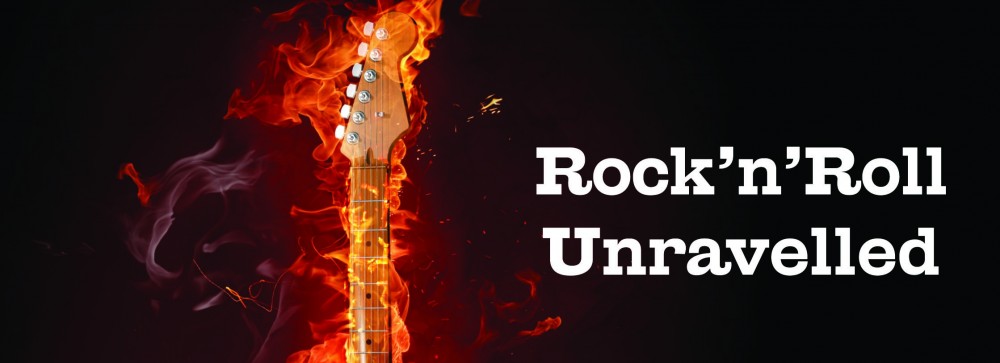
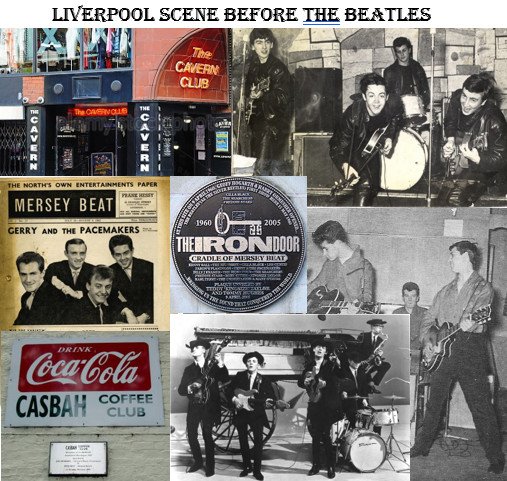
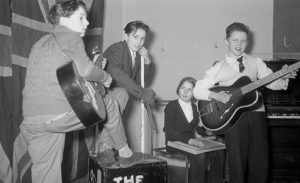
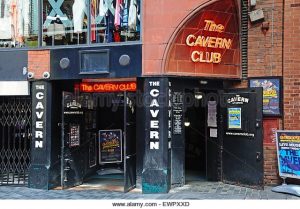
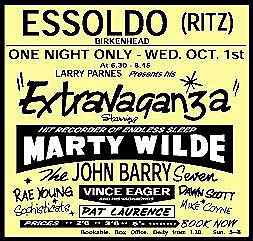
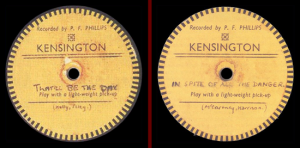
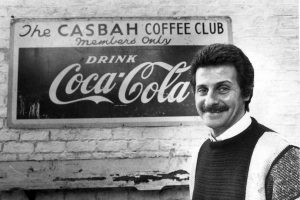
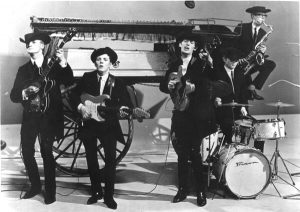
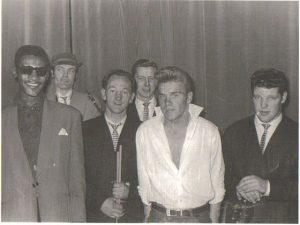
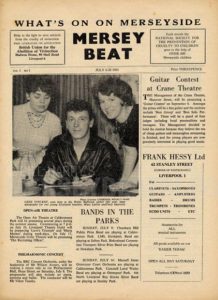
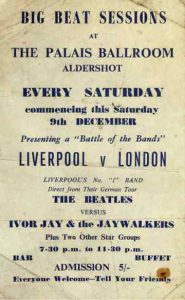
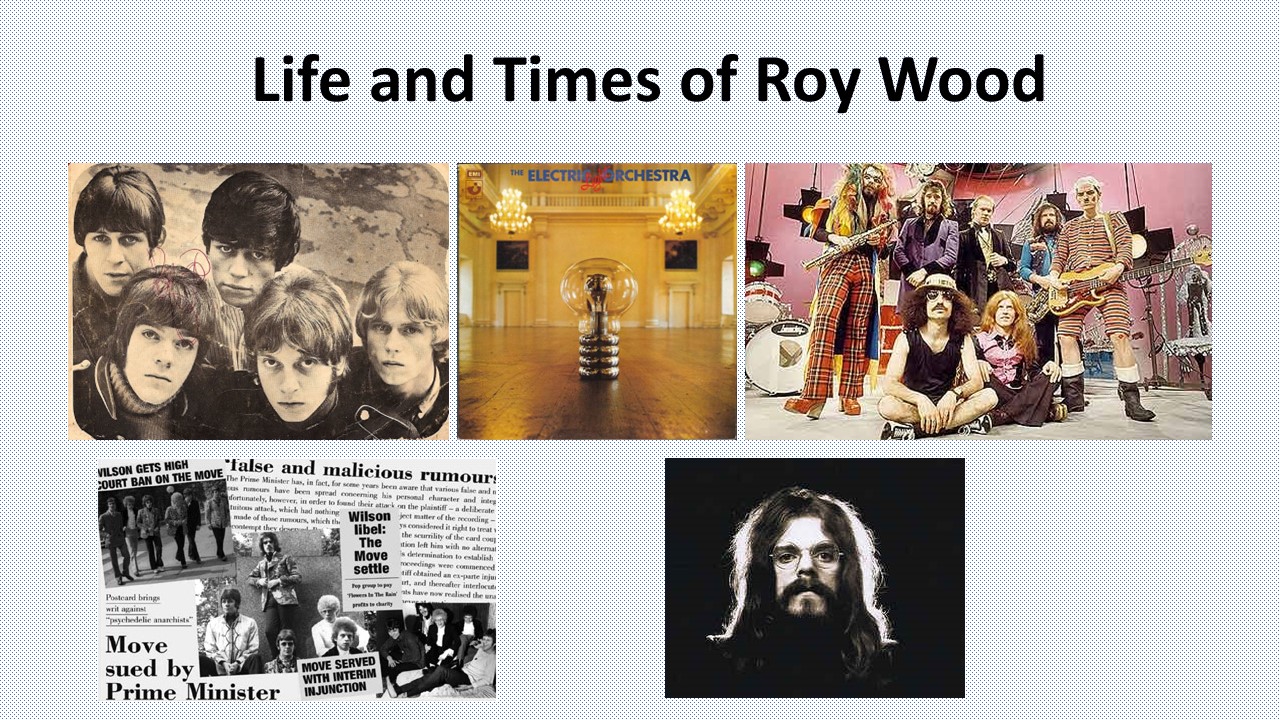
What about Tony Sheridan..lead vocalist
Hi Pauline, Absolutely, Tony Sheridan was a big part of the Beatles life in Hamburg. This piece wasn’t really about the Beatles, I’m planning to do a piece about the Beatles story from the beginning to when Ringo joined. This will include Tony Sheridan, how Sam Leach was nearly their manager instead of Brian Epstein, Alan Williams and their failed Billy Fury audition and lots more… Watch this space… and thanks for your comment. Cheers, Derek
i am in my 80,s, this is a fantastic history of life in my teens’ and a brilliant chronology, I wish that I had known of its existence before now, I have re-lived a large part of my youth reading this, I was at Quarry Bank at the time of John, and his closest friend Peté sadly both have now left us.
Thank you I loved it
Does anybody know when The Sink Club in the basement of The Rumblin Tum first opened its doors? I’ve heard 1963, if that’s correct does anybody know the exact date in 1963?
If you’re interested in my upcoming book BEATLES LOCATIONS IN LIVERPOOL, with 1000+ locations, 3000+ pictures on 1000+ pages……you can pre-order now : jeff_pelkmans@yahoo.com
Only pre-ordered books will be printed and delivered. !